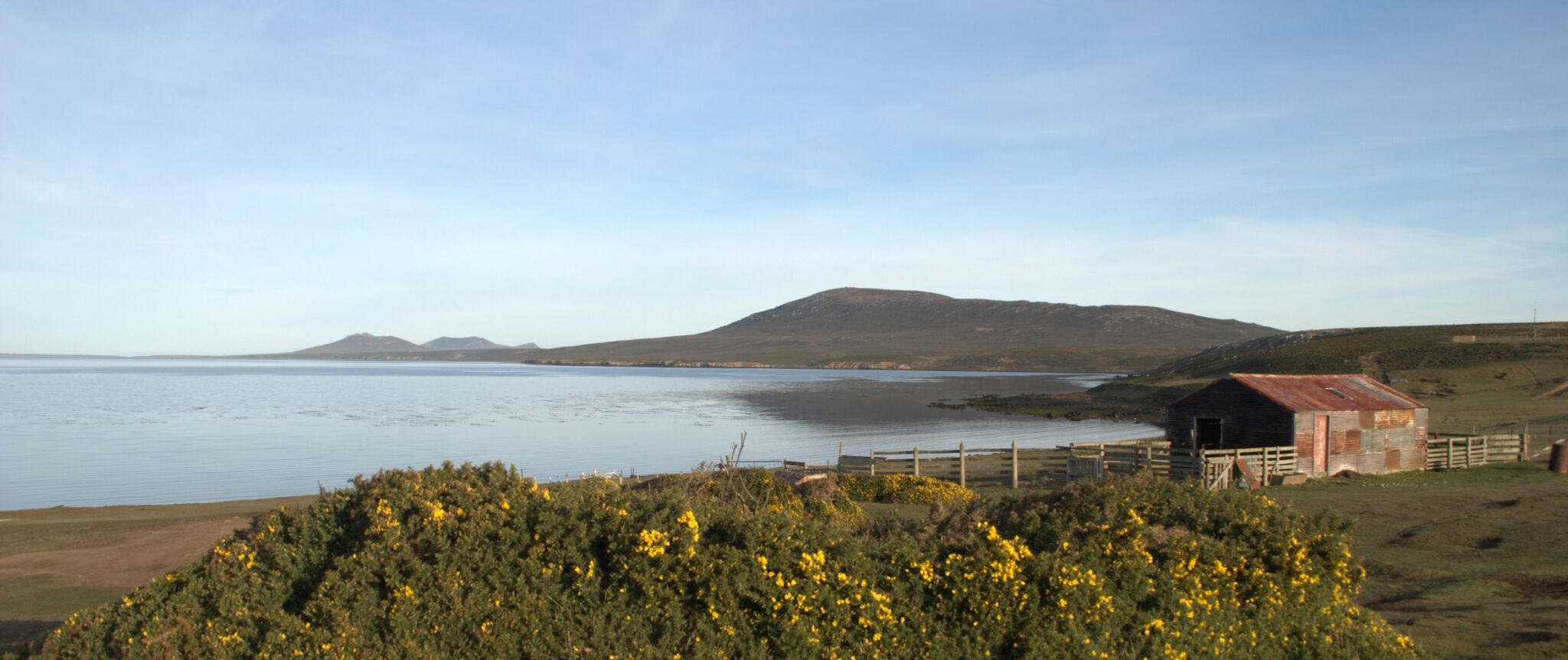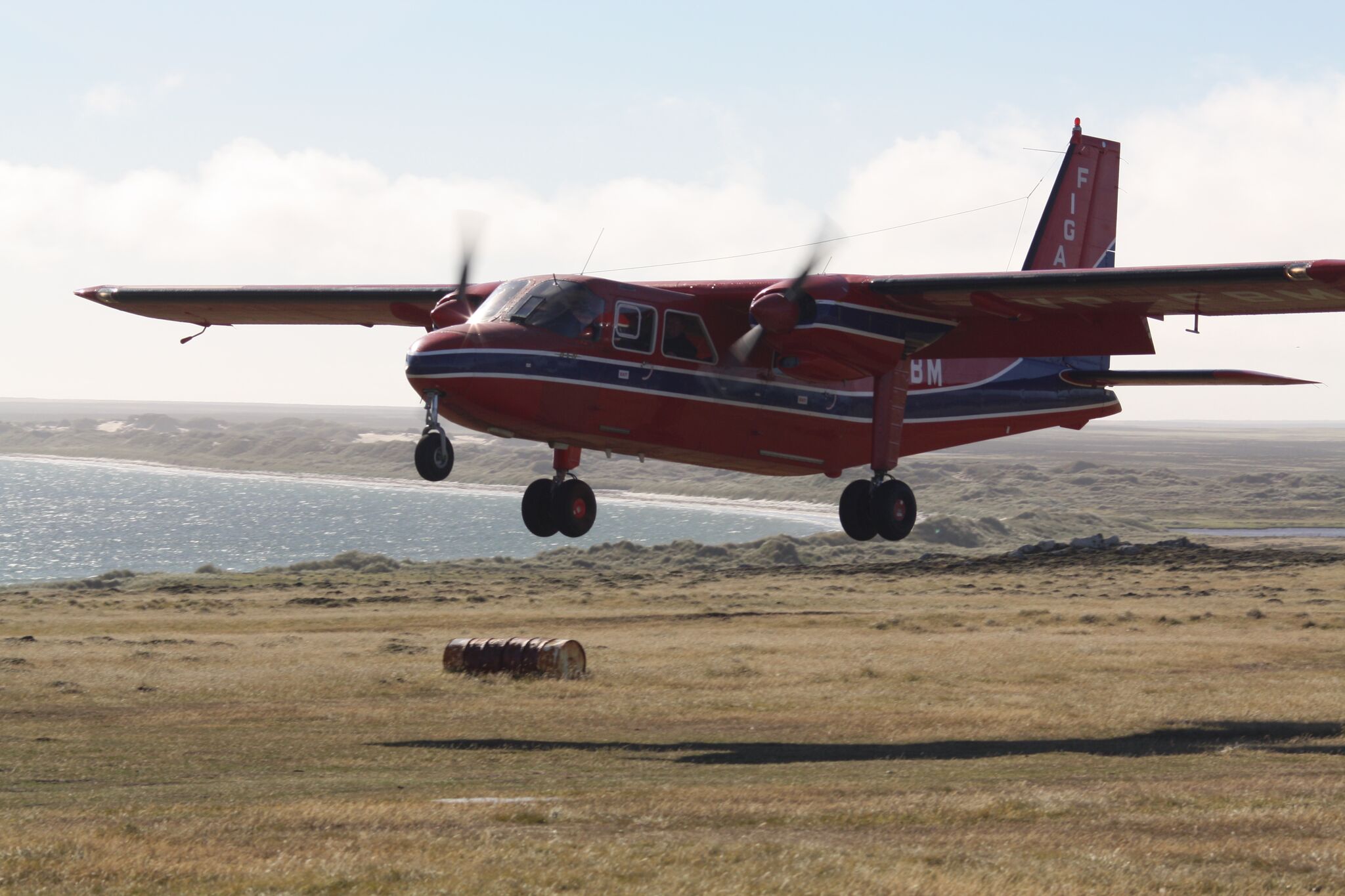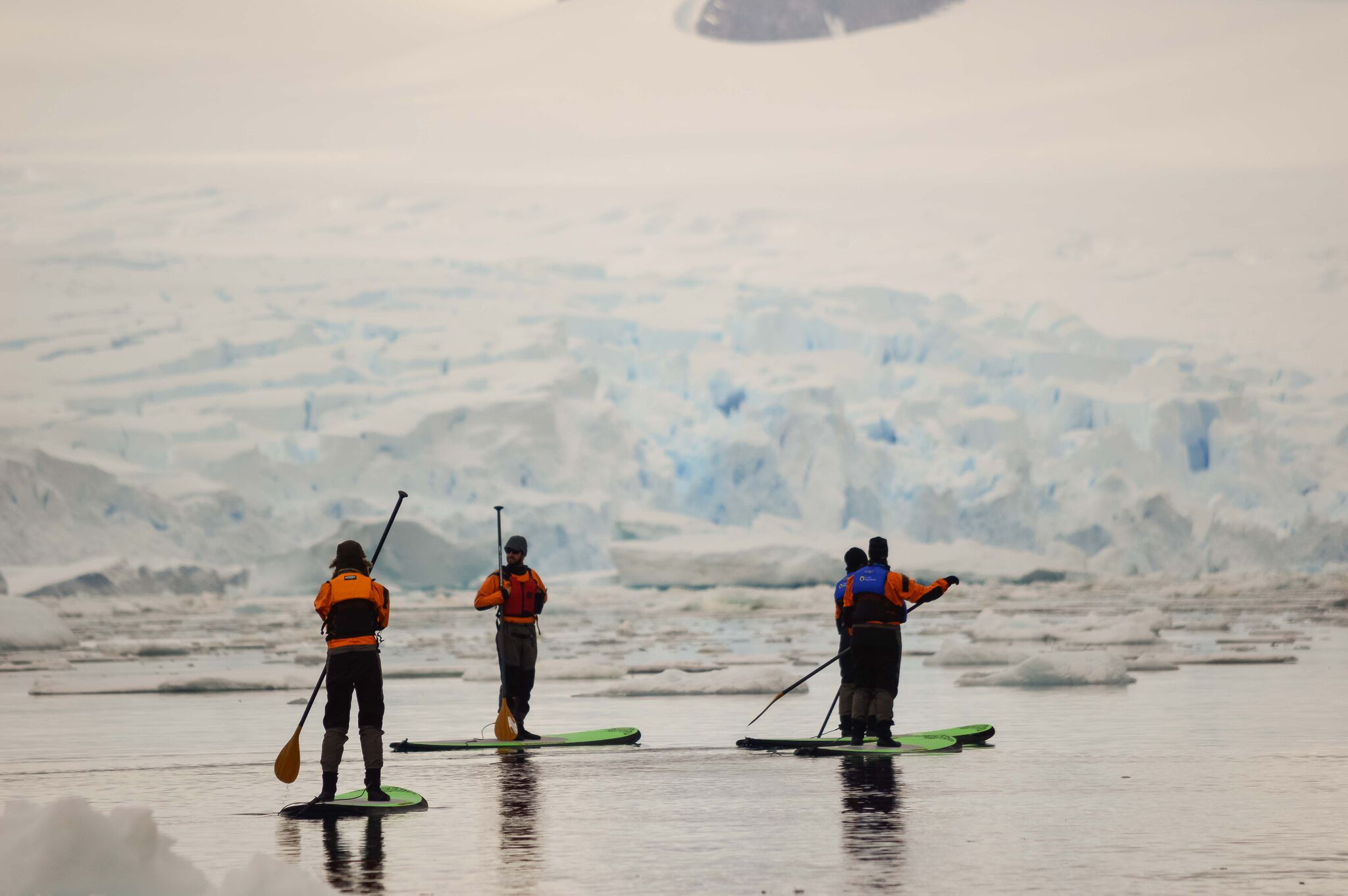It’s just a 10 minute flight to Bleaker and because of aircraft rotations, we had to leave at 0830, which meant a 0700 breakfast, but we still managed an early trip down to the beach. Caught another glimpse of the orca out in the bay and dodged the fast lumbering bull elephant seals as I got in their way – not that I meant to, but you walk past them and they look fast asleep and the next minute, they are up on their flippers and moving really fast! Also had another look at the seal carcass, which is now reduced to a pink skeleton being picked over by the cara caras. Sorry to leave here – there is so much wildlife and you become so absorbed with everything around you.
Arrived on Bleaker and our hostess, Elaine, was more than happy to take us out or leave us to our own devices with lots of guidance. We opted for the latter, so Elaine showed us where to go and what to see and dropped us off South of the settlement so we could walk back. We needed the exercise and enjoyed our walk back along the coast stopping for a delicious packed klunch overlooking a bay watching steamer ducks with chicks, rock shags and the graceful giant petrel. On the way, we ticked another box when we came across a colony of night herons with several nests and quite large chicks.
Back to our house for tea – we are the only guests sharing a house with 4 ensuite bedrooms, kitchen and lounge;there is another house with two further bedrooms an there are available for singles, couples, families or groups on a full service basis in high season or self catering in the winter.
We said we wanted to do more walking, so Elaine then dropped us off at the far end of the island for us to walk back the 8-10 km. the very end of the island is a nature reserve, I.e. no livestock grazing. We had to walk carefully because this is also where lots of southern giant petrels have their nesting sites – really amazing being so close and it was sometimes difficult to see them because they were so well camouflaged, even though these are massive birds. Also, lots of cliff colonies of rock and king shags and always, kelp and upland geese, kelp and dolphin gulls, South American tern, sheathbills, oyster catchers, etc. We walked across the meadows of diddle dee and tussock grass seeing plover, dottrels, finches and tussoc birds, with brown skuas always on the lookout for unattended nests, until eventually, we reached Sandy Bay, a long expanse of beautiful white sandy beach. We had come to see the gentoo penguins (and a few jackass too, coming out of their burrows) and what a beautiful picture they made in the late afternoon sunshine. Then out of the blue came a commotion in the surf and there was a pod of the spectacular black and white Commerson’s dolphin – yet another tick on the list of amazing Falklands wildlife.
Back to the house for a super dinner of roast lamb with mint and trimmings. Elaine’s husband odes the faming on the island and they kill their own beef and lamb. So tasty, I had third helpings! Gorgeous sunset. Back to Stanley in the morning…













